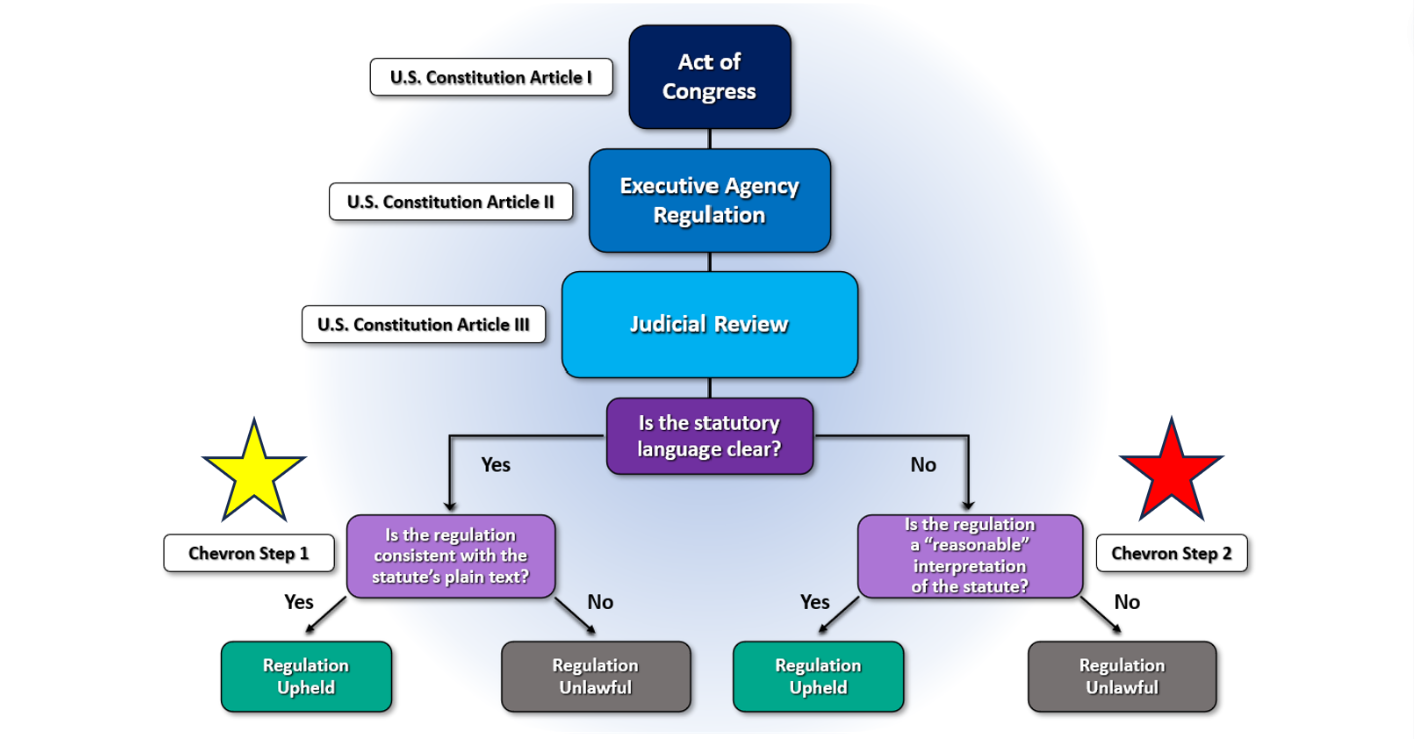Legal Precedents and Impact

Chevron ruling explained – The Chevron ruling, formally known as Chevron U.S.A., Inc. v. Natural Resources Defense Council, Inc., is a landmark Supreme Court decision that established the framework for judicial review of agency interpretations of statutes. The ruling has had a profound impact on administrative law and has been cited in numerous subsequent cases.
Chevron ruling explained in supreme court cases has a significant impact on the legal landscape. Its principles of deference to agency interpretations have implications for a wide range of issues, including the rights of supreme court homeless. Understanding Chevron’s application is crucial for navigating the complex legal framework that governs administrative agencies and their decisions.
The legal basis of the Chevron ruling is the principle of deference to agency expertise. The Court held that when an agency is interpreting a statute that it administers, the court must defer to the agency’s interpretation if it is reasonable and consistent with the statute’s text.
Understanding the Chevron ruling is crucial for navigating complex legal landscapes. The Chevron doctrine, established in 1984, dictates that courts must defer to an agency’s interpretation of a statute when that interpretation is reasonable. This doctrine has far-reaching implications for administrative law, empowering agencies to play a significant role in shaping the legal framework.
To delve deeper into the Chevron ruling and its impact, visit chevron ruling explained for a comprehensive analysis.
Chevron Deference, Chevron ruling explained
The Chevron doctrine has two steps. First, the court must determine whether the statute is ambiguous. If the statute is clear, then the court will apply the plain meaning rule and will not defer to the agency’s interpretation.
The Chevron ruling, which sets a precedent for judicial deference to agency interpretations of law, has been a topic of significant debate. The Supreme Court’s decision in Chevron U.S.A., Inc. v. Natural Resources Defense Council, Inc. established a two-part test for courts to apply when reviewing agency interpretations.
This test has been applied in numerous cases, including the Chevron decision , which further clarified the scope of judicial deference. Understanding the Chevron ruling is crucial for comprehending the interplay between the judiciary and administrative agencies in the interpretation and application of law.
If the statute is ambiguous, then the court will defer to the agency’s interpretation if it is reasonable. The court will consider the following factors in determining whether the agency’s interpretation is reasonable:
- The text of the statute
- The purpose of the statute
- The legislative history of the statute
- The agency’s expertise
Examples of Chevron Deference
The Chevron doctrine has been applied in numerous subsequent cases. For example, in Auer v. Robbins, the Supreme Court held that the Department of Labor’s interpretation of the Fair Labor Standards Act was entitled to deference. The Court found that the statute was ambiguous and that the Department of Labor’s interpretation was reasonable.
The Chevron ruling established a two-step test for judicial review of administrative agency decisions, which has been applied in numerous cases involving the Civil Rights Act. The first step is to determine whether the agency’s interpretation of the statute is reasonable, and the second step is to determine whether the agency’s application of the statute to the facts of the case is supported by substantial evidence.
The Chevron ruling has been criticized by some for giving too much deference to administrative agencies, but it remains an important precedent in the field of administrative law.
In another case, Chevron U.S.A., Inc. v. Echazabal, the Supreme Court held that the Environmental Protection Agency’s interpretation of the Clean Air Act was entitled to deference. The Court found that the statute was ambiguous and that the EPA’s interpretation was reasonable.
Potential Implications of Overturning Chevron Deference
The Chevron doctrine has been criticized by some scholars and judges. They argue that the doctrine gives too much deference to agencies and that it allows agencies to avoid judicial review. If the Chevron doctrine were overturned or modified, it would likely lead to more judicial review of agency interpretations of statutes.
Statutory Interpretation and Judicial Deference
The Chevron ruling established the principle of judicial deference to agency interpretations of statutes. This means that courts will generally defer to an agency’s interpretation of a statute if it is reasonable and based on a permissible construction of the statute’s language.
In determining the level of deference owed to an agency interpretation, courts consider several factors, including:
- The agency’s expertise in the subject matter of the statute
- The consistency of the agency’s interpretation with the statute’s purpose
- The agency’s interpretation has been followed consistently over time
The Chevron ruling has significantly influenced the balance between judicial and agency authority in statutory interpretation. Prior to Chevron, courts were more likely to engage in a searching review of agency interpretations. However, after Chevron, courts are more likely to defer to agency interpretations that are reasonable and based on a permissible construction of the statute’s language.
Policy Considerations and Regulatory Flexibility: Chevron Ruling Explained

The Chevron ruling sought to balance the need for regulatory efficiency and predictability with the importance of judicial oversight. The ruling’s aim was to promote regulatory efficiency by giving agencies greater flexibility to interpret ambiguous statutory language and to adapt their regulations to changing circumstances.
Supporters of judicial deference argue that agencies possess specialized expertise and knowledge in their respective fields, making them better equipped than courts to interpret complex statutory provisions and to fashion appropriate regulations. They also contend that deference promotes regulatory consistency and predictability, as agencies are more likely to adhere to their own interpretations over time.
Arguments Against Judicial Deference
Opponents of judicial deference, on the other hand, argue that it can lead to agencies exceeding their statutory authority and issuing regulations that are inconsistent with legislative intent. They also contend that deference can undermine the separation of powers by allowing agencies to make policy decisions that are more appropriately left to the elected branches of government.
Impact on Regulatory Flexibility
The Chevron ruling has had a significant impact on the flexibility of agencies in adapting to changing circumstances. By giving agencies greater deference in interpreting statutory language, the ruling has allowed them to adjust their regulations more quickly and effectively to address new developments and emerging issues.
Chevron ruling explained is a doctrine that gives deference to an agency’s interpretation of a statute that it administers. However, in a recent case, chevron vs nrdc overturned , the Supreme Court ruled that Chevron deference does not apply when the agency’s interpretation is unreasonable.
This ruling has significant implications for the future of Chevron ruling explained.